Main menu
Common skin conditions

NEWS
Join DermNet PRO
Read more
Quick links
Author: Beth Wright, Core Medical Trainee, Bristol, United Kingdom; Chief Editor: Dr Amanda Oakley, Dermatologist, Hamilton, New Zealand, December 2014.
Introduction Demographics Clinical features Causes Diagnosis Treatment
Hairy tongue is an unusual, harmless condition characterised by a 'hairy' enlargement and discolouration of the filiform papillae. The filiform papillae are tiny conical bumps found on the surface of the front two-thirds of the tongue that do not carry taste buds.
It is also known as black hairy tongue and lingua villosa nigra.
Hairy tongue most often occurs in adults over 40 years of age and is rare in infants [1].
A range of medications have been linked to hairy tongue including penicillin, erythromycin, tetracycline, doxycycline, lansoprazole, olanzapine, bismuth [1], erlotinib [2], linezolid [3].
Other factors that may cause, and/or aggravate hairy tongue include:
The filiform papillae can grow up to 18 mm in length—a ‘hairy’ appearance [4]. The tongue becomes discoloured, usually brown or black, although brown, yellow and green have also been described [5]. The back surface of the tongue is usually affected, and the tip and sides of the tongue are often spared [4].
Hairy tongue is usually asymptomatic and the main problem is its unsightly appearance. Occasionally patients may complain of a burning or tickling sensation on the tongue, nausea, or halitosis (bad breath).
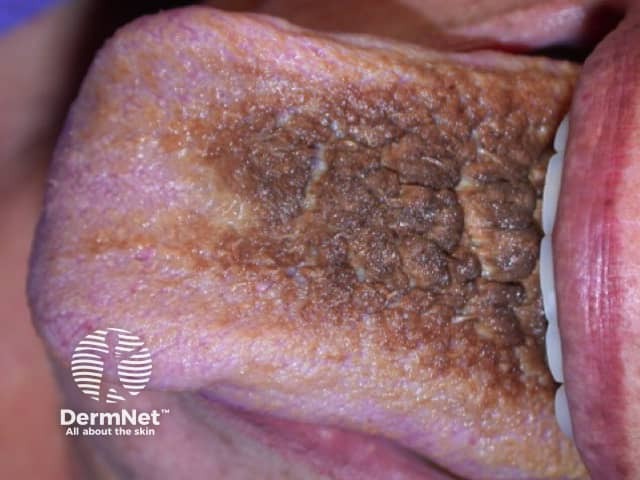
Black hairy tongue
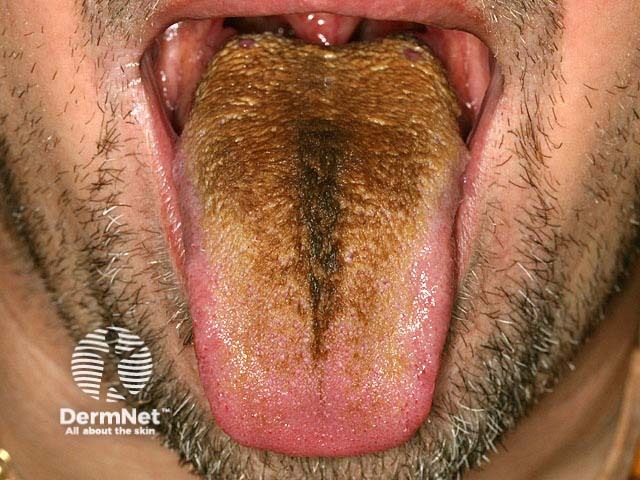
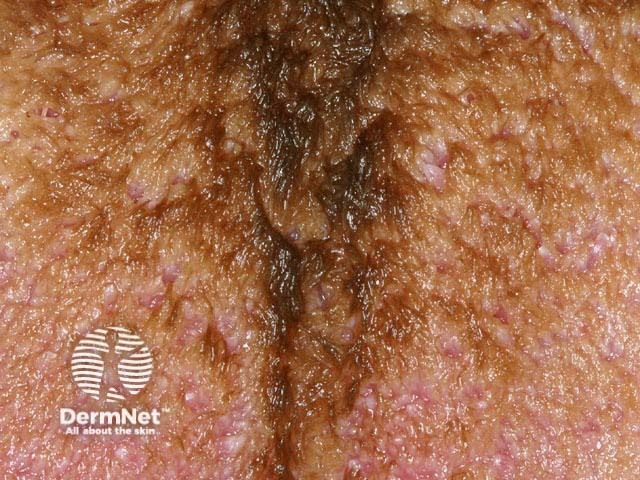

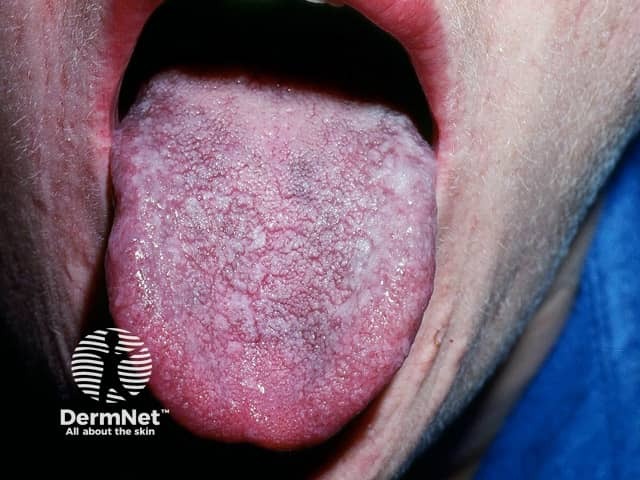
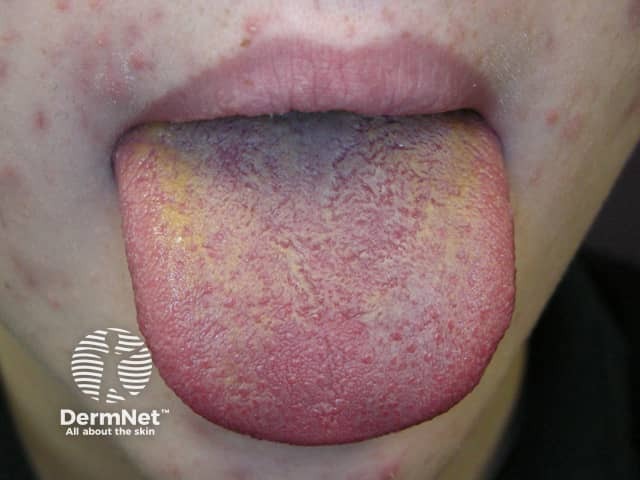
Hairy tongue is due to defective shedding of surface cells. Abnormal filiform papillae prevent normal cleaning and debridement of the tongue, hence debris accumulates. Bacteria and yeasts then overgrow and make porphyrins (deeply coloured organic compounds), which may contribute to the discolouration [5].
Hairy tongue is a clinical diagnosis [4].
It is important to take a detailed history to establish possible contributing factors. Investigations may include:
Hairy tongue is usually self-limiting. If desired, treatment options include:
If other treatment fails, trimming papillae by carbon dioxide laser burning and electrodessication have been described [5].